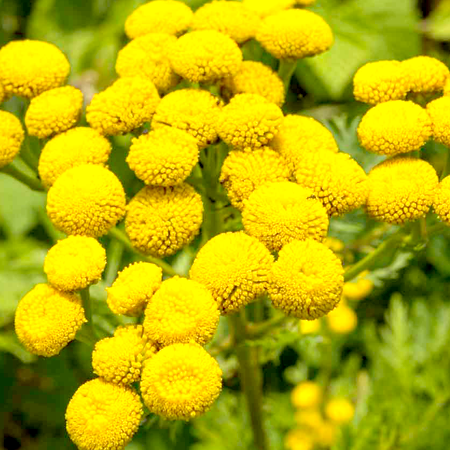

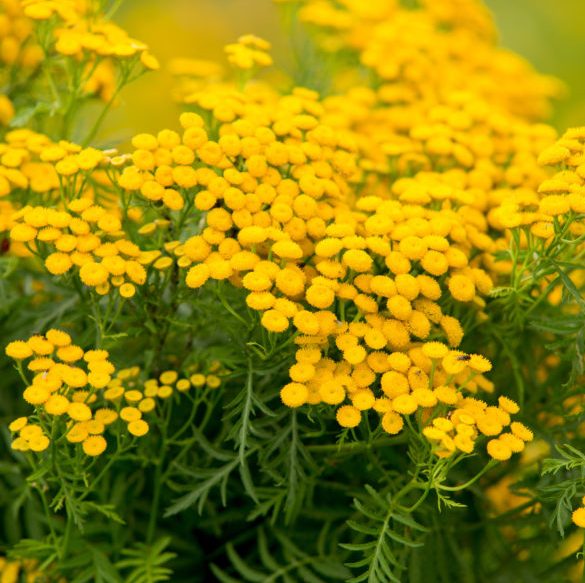
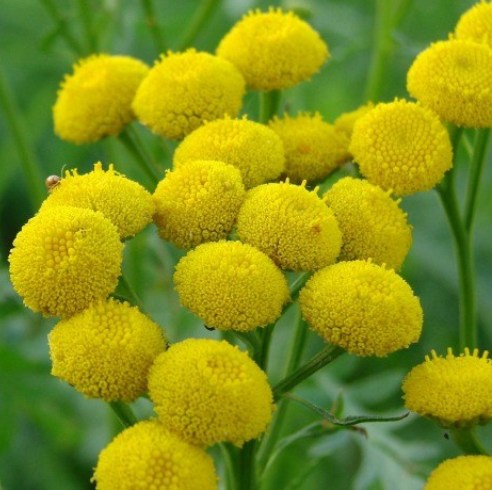
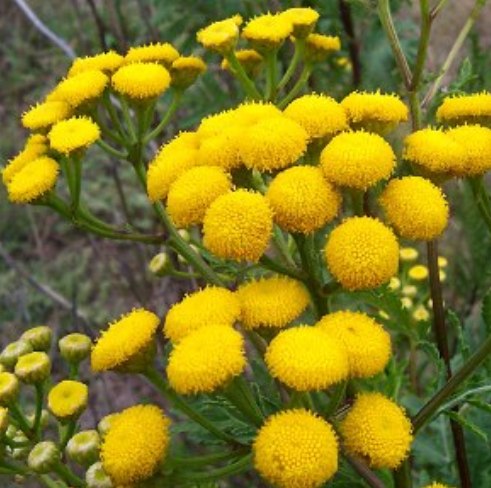
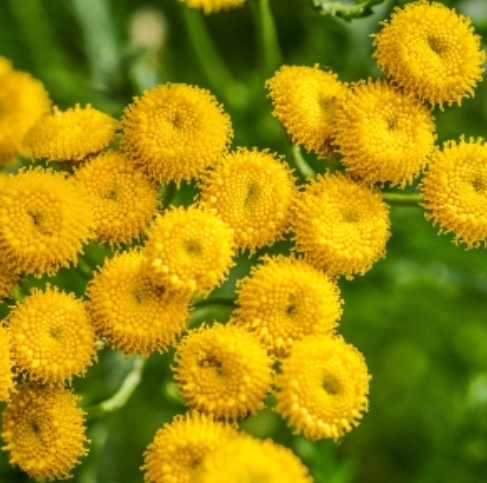
Botanical names Tanacetum annuum L
Source Flower
Family Asteraceae
Origin Morocco
Processing Method Steam Distillation
Description / Color / Consistency A thick, blue liquid.
Aromatic Summary / Note / Strength of Aroma A middle note with a medium aroma, Tansy Blue has a surprisingly sweet scent making it perfect for applications in skin-care products.
Blends With Blends well with most essential oils, though particularly with Ravensara and Ravintsara. When blending, special attention should be given for color issues that may arise; for example, a bluish tint or discoloration if used in a white cream or lotion.
Product Abstract
The name Blue Tansy is actually a misnomer; the plant itself is a yellow-flowered Mediterranean herb native to Morocco. The oil of the Blue Tansy plant belongs to a group called the chamomile oils, Chamazulene, a chemical component in Blue Tansy, provides the characteristic indigo color and is recognized for its skin soothing benefits. At the same time, the main chemical component Sabinene helps diminish the appearance of blemishes. Uplifting to the mood, Blue Tansy provides a sweet aroma to fill any room.
History
Tansy is native to Eurasia; it is found in almost all parts of mainland Europe, as well as Britain and Ireland. It is absent from Siberia and some of the Mediterranean islands. The ancient Greeks may have been the first to cultivate it as a medicinal herb. In the sixteenth century it was considered to be "necessary for a garden" in Britain Tansy has a long history of use. It was first recorded as being cultivated by the ancient Greeks for medicinal purposes. In the 8th century AD it was grown in the herb gardens of Charlemagne and by Benedictine monks of the Swiss monastery of Saint Gall. Tansy was used to treat intestinal worms, rheumatism, digestive problems, fevers, sores, and to bring out measles.
Harvesting/Extraction Information
Tansy is a common European herb and the scientific name of Tansy is Tanacetum Vulgare or Tanacetum Annuum. The essential oil of Tansy is extracted by steam distillation of all the plant parts. The chief components that form this essential oil are artemisone, borneol, camphone, camphor, isopinocamphone, piperitone, and thujone.
Common usage
Caution
Tansy oil is a potent poison due to the presence of high concentration of thujone and even small doses can be fatal. It can also trigger hallucinations and severe nervous or neurotic disturbances while having addictive, narcotic effects.
Key constituents
Chamazulene 17.0–38.3%
b-Myrcene 1.1–13.8%
Camphor 3.1–12.4%
Sabinene 4.1–8.6%
b-Eudesmol 3.5–6.7%
3,6-Dihydrochamazulene 2.2–5.3%
b-Pinene 1.6–5.0%
a-Phellandrene 1.4–4.7%
Borneol 0.5–4.3%
p-Cymene 1.1–3.4%
2,5,8-Trimethylnaphthol 0.6–3.1%
Terpinen-4-ol 0.9–2.8%
7,12-Dehydro-5,6,7,8-tetrahydrochamazulene 0.7–2.7%
p-cymene 1.2–2.6%
(þ)-Limonene 0.8–2.1%
Thymol 0.8–1.8%
a-Pinene 0.7–1.8%
b-Sesquiphellandrene 0.2–1.8%
1,8-Cineole 0.4–1.7%
b-Caryophyllene 0.8–1.6%
Valencene 0.5–1.6%
Germacrene D 0.4–1.6%
a-Terpinene 0.1–1.2%
Caryophyllene oxide 0.5–1.0%
Methyl jasmonate tr-1.0%
Safety summary
Hazards Drug interaction.
Cautions (all routes) Drugs metabolized by.
Cautions (oral) Drugs metabolized by CYP1A2 or CYP3A4.
Organ-specific effects
Adverse skin reactions No information found.
Systemic effects
Acute toxicity No information found.
Carcinogenic/anticarcinogenic potential No information was found for blue tansy oil, but it contains no known carcinogens.
Drug interactions Since chamazulene inhibits CYP1A2, CYP3A4 and CYP2D6, there is a theoretical risk
of interaction between blue tansy oil and drugs metabolized by these enzymes.
Comments
Limited availability.